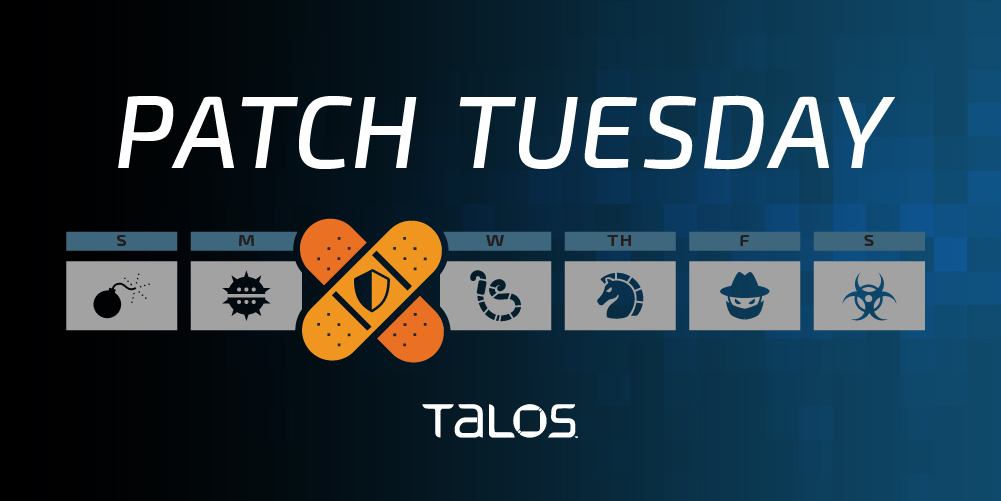
Microsoft released its monthly security update Tuesday, disclosing 69 vulnerabilities across its suite of products and software. Five of these vulnerabilities are considered to be critical, 45 of them are listed as being high severity, 17 of them are medium severity and two are of low severity.
For the first time in four months, none of the vulnerabilities Microsoft disclosed this Patch Tuesday have been exploited in the wild. June is also closer to an average month for Microsoft’s security update after only disclosing 40 vulnerabilities last month, which was nearly a [three-year low]().
Cisco Talos discovered two vulnerabilities in Microsoft Excel that the company patched Tuesday. These are important-severity remote code execution vulnerabilities that are triggered if the targeted user opens an attacker-created file.
Three critical vulnerabilities — [CVE-2023-29363](), [CVE-2023-32014]() and [CVE-2023-32015]() — in the Windows Pragmatic General Multicast (PGM) server environment with a severity score of 9.8 could lead to remote code execution. In a Windows Pragmatic General Multicast (PGM) server environment where the Windows message queuing service is running, an attacker could send a specially crafted file over the network to achieve remote code execution and attempt to trigger malicious code. Microsoft has advised users to refer to a setting, standard configuration, or general best practice existing in a default state that could reduce the severity of exploitation of this vulnerability.
[CVE-2023-29357]() is an elevation of privilege vulnerability in Microsoft SharePoint Server that also has a severity score of 9.8. An attacker who successfully exploits this vulnerability could gain administrator-level privileges. They could have access to spoof the JSON Web Token [JWT] authentication tokens and use them to execute a network attack that bypasses the authentication and allows them to gain access to the privileges of an authenticated user. The attacker requires no user interaction to exploit this vulnerability. Microsoft has advised that customers should apply all updates offered for the SharePoint Enterprise server. On-premises customers can enable the AMSI feature, which protects them from this vulnerability.
Talos would also like to highlight a few high-severity vulnerabilities that Microsoft considers “more likely” to be exploited.
A high-severity remote code execution vulnerability, [CVE-2023-28310](), exists in Microsoft Exchange Server. An authenticated attacker on the same intranet as the Exchange Server can achieve remote code execution via a PowerShell remote session.
[CVE-2023-29358](), an elevation of privilege vulnerability in the Windows graphics device interface (GDI), is a use-after-free vulnerability in the Win32k kernel driver. An attacker who successfully exploited this vulnerability could gain SYSTEM privileges.
[CVE-2023-29361]() could also allow an attacker to gain SYSTEM privileges if they exploit a use-after-free issue in the Windows Cloud Files Mini Filter Driver.
Microsoft Exchange server contains a high-severity remote code execution vulnerability, [CVE-2023-32031](), with a severity score of 8.8. An attacker successfully exploiting this vulnerability could target the server accounts in an arbitrary or remote code execution. As an authenticated user, the attacker could attempt to trigger malicious code in the context of the server’s account through a network call.
Another elevation of privilege vulnerability, though only considered “important,” [CVE-2023-29371](), exists in the Windows Win32k kernel driver. An attacker could modify a curve without updating the cCurves values, which leads to an out-of-bounds write in win32kfull when the curves’ edges get processed, ultimately giving them system privileges.
One medium-severity worth noting is [CVE-2023-29352](), a security feature bypass vulnerability in Windows Remote Desktop. An attacker who successfully exploited this vulnerability could bypass certificate validation during a remote desktop connection by creating a validly signed “.RDP” file to bypass warning prompts when executed.
A complete list of all the vulnerabilities Microsoft disclosed this month is available on its [update page]().
In response to these vulnerability disclosures, Talos is releasing a new Snort rule set that detects attempts to exploit some of them. Please note that additional rules may be released at a future date, and current rules are subject to change pending additional information. Cisco Secure Firewall customers should use the latest update to their rule set by updating their SRU. Open-source Snort Subscriber Rule Set customers can stay up to date by downloading the latest rule pack available for purchase on Snort.org.
The rules included in this release that protect against the exploitation of many of these vulnerabilities are 61907 – 61911, 61915, 61916, 61933 – 61935 and 61937 – 61939. The Snort 3 rules released for these vulnerabilities are 300592, 300593, 300595 and 300600.Read More
References

Back to Main


